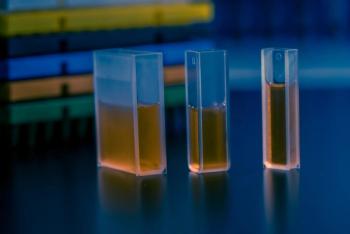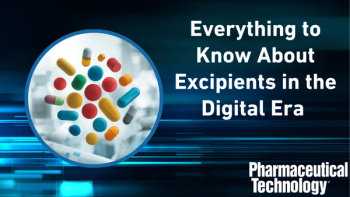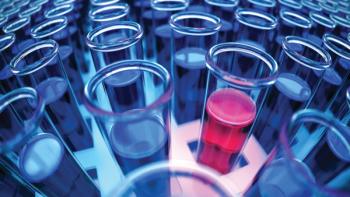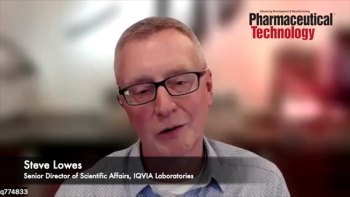
- Pharmaceutical Technology-10-01-2019
- Volume 2019 Supplement
- Issue 5
Proactive Evaluation of Possible Genotoxic Impurities During the Early Stages of Drug Development
The author provides a direction for identifying genotoxic impurities early in the drug development process, regulating genotoxic impurities at acceptable levels in the API or drug product, and avoiding negative product regulation late in the development and/or marketing process, including expensive recalls.
Control of mutagenic and/or genotoxic impurities in an API has been the topic of deficiencies cited by FDA and other regulatory agencies all over the world for the past few years (1–3). Before delving into what may be the source of these deficiencies and identifying any pro-active steps to avoid them, it is important to understand the relationship between mutagenic and genotoxic impurities. For a long time, these two terms have been used interchangeably by regulatory agencies and the pharmaceutical industry. However, International Council for Harmonisation (ICH) M7(R1) (4) specifically mentions “mutagenic” impurities in its title as well as content rather than the general team, “genotoxic”. Hence, a few words related to the relationship between the mutagenic and genotoxic impurities may be useful prior to commencing discussion on this topic. Based on the definitions in ICH M7(R1), genotoxicity is “a broad term that refers to any deleterious change in the genetic material regardless of the mechanism by which the change is induced” (4). Also, the Globally Harmonized System of Classification and Labelling of Chemicals (GHS), Fifth Revised Edition, United Nations, Chapter 3 has the following definitions of mutagenic and genotoxic materials (5):
“3.5.1.3 The term mutation applies both to heritable genetic changes that may be manifested at the phenotypic level and to the underlying DNA modifications when known (including for example, specific base pair changes and chromosomal translocations). The term mutagenic and mutagen will be used for agents giving rise to an increased occurrence of mutations in populations of cells and/or organisms.”
“3.5.1.4 The more general terms genotoxic and genotoxicity apply to agents or processes which alter the structure, information content, or segregation of DNA, including those which cause DNA damage by interfering with normal replication processes, or which in a non-physiological manner (temporarily) alter its replication. Genotoxicity test results are usually taken as indicators for
mutagenic effects.”
Thus, mutagenicity implies induction of permanent transmissible changes in the amount or structure of the genetic material of cells or organisms, while all genotoxic effects are not necessarily associated with mutations. Hence, all mutagens are genotoxic, but, not all genotoxic substances are mutagenic. When genotoxic impurities are mentioned in publications and deficiencies cited by FDA and other regulatory agencies, they include mutagens and also other impurities that can cause DNA damage though different pathways. In this paper, the term genotoxic impurities will be used to refer to mutagenic as well as other genotoxic impurities, unless there is specific need to refer to a material as mutagenic.
The purpose of this article is to provide a direction for identifying genotoxic impurities early in the drug development process, regulating genotoxic impurities at acceptable levels in the API or drug product, and avoiding negative product regulation late in the development and/or marketing process, including expensive recalls. The focus of this discussion are the dossiers submitted to FDA, especially for generic drugs (e.g., 505(j), abbreviated new drug applications [ANDAs], and 505(b)(2) new drug applications [NDAs], which use APIs that are already approved by FDA). However, most of the principles also apply to new chemical entities and also other regions of the world that follow ICH guidelines.
The current resurfacing of nitrosamines in the pharmaceutical world due to FDA and other international agencies finding traces of these compounds in the angiotensin II receptor blockers (ARBs), commonly known as the “sartans,” has led to recalls of several drugs of this class (6). As of now, valsartan and losartan are the worst affected, and several lots of these products have been recalled (7). Currently, we have also been informed by FDA about the presence of nitrosodimethylamine, NDMA, in ranitidine hydrochloride (8). While the pharmaceutical industry has been diligently working to address the nitrosamines in ARBs, questions have also arisen as to how a situation of this kind could be anticipated and possibly avoided in the future, not just for nitrosamines but other genotoxic impurities as well.
Discussion
Genotoxic impurities can occur in drug products based on the manufacturing of the API, degradation of the API, or in some cases, from the excipients (9). The source of genotoxic impurities in the API and drug product generally is the API manufacturing process, including starting materials and reagents. Reagents used in API synthesis are often highly reactive, and genotoxic impurities can result from leftover reagents carried through the manufacturing process, by-products of the chemical transformations, or the subsequent degradation/interactions of the API (9,10). Although rare, genotoxic impurities occasionally form in the drug product as a result of interaction of the API with excipients. This article, however, focuses on the possible genotoxic impurities rising from the manufacture of the API.
Inability to apprehend the possibility of formation of impurities with genotoxic potential can significantly impact the approval of an NDA or ANDA. Usually, with new chemical entities related to 505(b)(1) applications, the sponsors perform evaluation of the synthetic pathways and address possible and plausible impurities, including impurities with genotoxic potential early in the investigational new drug (IND) process. In the best-case scenario, the control strategies are shared with, and agreed upon, by FDA prior to submission of the NDA. However, with the 505(j) and some 505(b)(2) applications, where an API used is already present in an FDA-approved drug, the detailed understanding of the risk related to the API manufacturing process often takes a back seat. Irrespective of the fact that the API is present in an FDA-approved product, there can be risk related to genotoxic impurities based on a new synthetic route, origin of the starting materials, sources of reagents, and solvents used. This can also be an issue during the lifecycle management of a 505(b)(1) NDA. It is essential that the manufacturing process of the API is appropriately evaluated and also that the origin and controls of the starting material and reagents are appropriately scrutinized to ensure that there are no surprises in the impurity profile during the FDA’s review or lifecycle management.
The question often comes up as to where to start the process of identifying plausible genotoxic impurities in an API manufacturing process. The best place to start is by being cognizant of the structural alerts related to genotoxicity as provided in Figure 1 (11).
For an API manufacturer to increase the chances of avoiding deficiencies related to controls of genotoxic impurities, several aspects of the manufacturing process and controls should be evaluated. If any starting material, reagent, intermediate, or possible side product has one of the structures in Figure 1, an evaluation should be initiated immediately, and a control strategy put in place. In addition, the following are some other angles from which the possible presence of genotoxic impurities may be addressed.
Selection of the manufacturing process. This is a good place to start to reduce risk related to genotoxic impurities. A manufacturing option with more steps is favored if it involves lesser use of potentially genotoxic reagents or generation of potentially genotoxic intermediates or side products.
Starting material. The selection of starting materials in the synthesis of API is crucial for many reasons, one of them being its impact on the impurity profile of the API. The starting material should not be defined significantly downstream in the process, as this may make it difficult to purge impurities arising from the starting material. Also, there needs to be knowledge related to the manufacturing process of the starting material and a good understanding regarding any of the reagents or intermediates or by-products of the process being a structural alert for genotoxic impurities. If there are potential genotoxic impurities in a late-stage intermediate that is being defined as a regulatory starting material (RSM), the API manufacturer may have an uphill task of adding significant controls to the RSM and final API or convincing FDA that these impurities are purged efficiently by the process and do not pose a risk to the API or drug product. Both options are expensive and time consuming and could be the cause of delay in approval.
By-products of reaction. If any of the by-products of side reactions in the manufacturing process are structural alerts for genotoxicity, it needs to be evaluated to determine whether they are completely consumed in subsequent reactions or persist throughout the manufacturing process. If needed, control for these by-products should be included at appropriate steps. The best place to control an impurity is close to its origin. However, if the by-product persists in the final API, controls may need to be added at the point of origin as well as the API.
Reagents and solvents. Many of the reagents are structural alerts for genotoxicity or may generate structural alerts downstream based on the reaction with intermediates or other reagents. Many of the surprises related to genotoxic impurities come from a lack of understanding of the reagents and solvents or their impurity profiles, as we have seen in the case of nitrosamines. The behavior of the solvents used during the manufacturing process should also be understood in the perspective of the synthetic steps. Some solvents are considered reactive and can do more than provide a medium for the reaction to happen. A classic example is acetone, which can undergo aldol condensation followed by dehydration under acidic conditions to product a genotoxic impurity, mesityl oxide (12). The nitrosamines in the “sartans” are believed to have originated from impurities like dimethylamine and diethylamine in upstream solvents like dimethylformamide and diethyl acetamide, reacting with the downstream reagent, sodium nitrite (13).
Degradant. If the potentially genotoxic or impurity is a degradant of the API in addition to being generated by the manufacturing process, a control of the impurity will be needed in the API and also in the finished dosage form keeping the maximum daily dose (MDD) of the drug product in mind.
Control strategy. Once the possible and plausible genotoxic impurities are identified in the API manufacturing process, a strategy is needed related to controlling them. This strategy can start with understanding the acceptable intake of the impurity based on the MDD as well as duration of the treatment as provided in Table 2 of ICH M7(R1) (4). There may be significant difference in acceptable intake based on whether the drug is for chronic use or a short-term use. For drugs with variable MDD based on indications, the most conservative MDD should be used to determine the threshold of toxicological concern (TTC). This determination should be followed by developing analytical method(s) that are sensitive enough to detect and quantitate the potential genotoxic impurities at the proposed levels. For potential genotoxic impurities that are generated upstream, spike and purge studies may be performed to ensure that these impurities are present at lower than 30% of the TTC level in the final API. The control strategy may also be based on the scientific understanding of the nature of the impurity and the measured or predicted purge factor (4,14).
In cases where the impurity is produced downstream in the API manufacturing process and persists in the API based on spike and purge or purge factor studies and/or is a known degradant, the impurity should be controlled in the drug substance and possibly in the drug product. The limit of the genotoxic impurities to be controlled in the intermediate or the final API can be justified by the TTC and also the spike and purge studies. The ICH M7(R1) guidance provides an approach for both classifying genotoxic impurities as well as determining safe levels. Other guidance, such as ICH S2(R1) (15) on genotoxicity testing, identifies bacterial and mammalian in-vitro and in-vivo testing options if a genotoxic impurity is identified based on quantitative structure activity relationships (15). The exception being if the compound of interest has the same structural alert as the API itself. In that case, it can be treated as a non-mutagenic impurity and controlled based on ICH Q3A(R2) qualification or identification threshold (4).
A few common genotoxic impurities and some examples of drugs where they can occur are summarized in the following sections. This is not intended to be a comprehensive list but covers some well-known genotoxic impurities, which may originate from the reagents used or even be present as impurities in reagents.
Examples of common genotoxic impurities
Epoxides. Epoxides (shown in Figure 2; where R1–4=alkyl, aryl or H) are highly reactive compounds that can interact with the DNA and are considered structural alert for genotoxicity (10,16). Epoxides can be formed as intermediates in reactions and can also when the synthetic route involves generation or use of alkenes and along with oxidants, such as peroxy acids. Epoxides usually undergo reaction in presence of strong acids and alcohols to produce non-genotoxic glycols.
Some of the examples of drugs that may have epoxide impurities include the following: acebutolol, atenolol, atorvastatin calcium, betamethasone, bicalutamide, fluocinolone acetonide, loteprednol etabonate, mometazone furoate, mupirocin, nadolol, stavudine, and vincristine.
Alkyl halides. Alkyl halides (shown in Figure 3; where R=alkyl, aryl group, or H and X=iodine, fluoride, chlorine, or bromide and other good leaving groups) are used extensively as alkylating agents in the synthesis of APIs (17,18). Alkyl halides are mostly left as residues at the end of alkylating reactions as they are used as excess. Alkyl halides are ubiquitous and are commonly used in numerous API manufacturing processes. The examples below are a few drugs where these impurities have been definitely identified. They are mostly highly reactive (e.g., alkylating agents) and are known genotoxic and carcinogenic compounds.
Some examples of drug products that may have alkyl halide impurities are the following: fexofenadine, anastrozole, aripiprazole, latanoprost, capecitabin, sitagliptin, sunitinib maleate, pazopanib, conivaptan hydrochloride, linezolid, and linagliptin.
Hydrazines. Hydrazine (shown in Figure 4; where R1–R4 are alkyl, aryl group, or a hydrogen), hydrazides (shown in Figure 4, where R1 = O, R2, R3, R4 = H, alkyl or aryl groups), and hydrazones (shown in Figure 4, where R1, R2 = alkyl or aryl groups, R3 = NH2) are common reagents used in the synthesis of APIs. Hydrazine itself is a well-known base and reducing agent (10,18,19). They are also known genotoxic and carcinogenic compounds. Hydrazines, being strong bases, can be washed out if there are steps downstream which involve strong acids.
Some examples of drugs that may have hydrazine, hydrazide or hydrazone impurities are the following: allopurinol, carbidopa, celecoxib, dihydralazine, hydralazine sulfate, isoniazid, mildronate, rifampicin, rizatriptan benzoate, sunitinib maleate, sildenafil citrate, saquinavir mesylate,
and ziprasidone.
Nitrosamines. Nitrosamines (shown in Figure 5; where R1–2 are alkyl or aryl groups) are well-known genotoxic and carcinogenic chemicals that are widely found in the environment and the food chain (20,21). Nitrosamines usually form in the API or drug product when a secondary amine (either part of the API structure or reagents in the manufacturing process) is exposed to a nitrosating agent such as sodium nitrite in a low pH environment. Nitrosamines can also form when there are secondary amine impurities in reagents and solvents. Thus, if an organic or inorganic nitrite is used in manufacturing of the API, the sponsors should evaluate the possibility of nitrosamines based on amines or amides that can be used or formed during the process.
Some examples of drug products which may have nitrosamine impurities: valsartan, olmesartan, irbesartan, losartan potassium and other “sartans”, chlorhexidine gluconate, propranolol, metoprolol, piperazine, ethambutol, ephedrine, indomethacin, phenytoin, and ranitidine.
Sulfonate esters. Sulfonate esters (Figure 6; where R1=alkyl or aryl group; where R2=alkyl groups) (10). Sulfonate esters are one of the most common and well-known genotoxic impurities formed during the API manufacturing process. The reason behind this is that the precursors to alkyl sulfonate esters, alkyl sulfonic acids, and alcohol or also alkyl halides are some of the most widely used in organic reactions. Many APIs are salts of alkyl sulfonic acids like mesylates, tosylates, besylates, and triflates, which lead to the presence of a conjugate base of alkyl sulfonic acids in stochiometric proportions in the API. Also, the alkyl sulfonic acids are used in protection and deprotection of functional groups and also as acid catalysts in several reactions. Alcohols like methanol, ethanol, and isopropanol are common solvents used in API manufacturing process. Also, alkyl halides, which can react with alkyl sulfonic acid to generate potentially genotoxic sulfonate esters, are themselves considered structural alerts for genotoxicity and also commonly used reagents in API manufacturing. Sulfonate ester formation can be controlled based on the levels of water or free base present
during the reactions (22).
Some examples of drug products that may have sulfonate ester impurities: nelfinavir mesylate and other drugs which are mesylate salts, glycopyrronium tosylate and other drugs with tosylate salts, clobetasol propionate, halobetasol propionate, mometasone furoate, oseltamivir phosphate, fosinopril sodium, esomeprazole sodium, orlistat, and tolterodine tartrate.
Conclusion
Genotoxic impurities need to be anticipated and identified early in the drug development process. Late identification of potential genotoxic impurities in API manufacturing can result in delays in submission of dossiers due to disruption in the manufacturing process. Request for evaluation of potential genotoxic impurities during the review process by agencies can lead to delays in agency approvals and loss of market share. Should identification occur post-marketing, this could result in disruption in supply of the drug product and, in some cases, drug shortage. Identification of any structural alerts in the API manufacturing process, along with quantitative structure activity relationship (QSAR) model positive confirmation (23), indicates the need for running a bacterial reverse mutation assay for confirmation and/or creating control strategies as per ICH M7(R1) (4). A sponsor’s awareness regarding the potential genotoxic structural alerts that may result from the chosen manufacturing process of an API, and early planning regarding how the potential genotoxic impurities may be controlled, would be a giant step toward reducing review cycles which in turn may be the pathway to quick approval. After all, as Benjamin Franklin once said, “An ounce of prevention is worth a pound of cure.”
References
1. N. Filiz, “
,” Certification of Substances Department, European Directorate for the Quality of Medicines, May 2018.
2. O. Diego, et. al., J Pharm Pharm Sci., 17(2), pp 169–186 (April 2014).
3. H. Liao, “
4. ICH, I
5. United Nations,
6. FDA, “
7. FDA, “FDA Provides Update on Its Ongoing Investigation into ARB Drug Products; Reports on Finding of a New Nitrosamine Impurity in Certain Lots of Losartan and Product Recall,” Press Release, March 1, 2019. 8. FDA, “
9. A. Giordani et al., Eur J Pharm Sci., 43 (1–2), pp 1–15 (March 2011).
10. G. Szekely, et al., Chem. Revs., 115 (16), pp. 8182−8229 (August 2015).
11. J. Wisler and K.A. Black, “
12. S. Thotla, et. al., Ind. Eng. Chem. Res., 46 (25), pp 8371-8379 (May 2007).
13. A. Srinivasan, A., “
14. A. Teasdale, et. al., Org. Process Res. Dev., 17(2), pp 221-230 (February 2013).
15. ICH,
16. C. Limban, et. al., Toxicol Rep., 5, pp. 943–953 (August 2018).
17. J. Abolghasem and H. Parsa, “
18. L.S. Gold et al., “
19. D. Elder et al., J Pharm Biomed Anal., 54 (5), pp 900–910 (April 2011).
20. R. N. Loeppky, “Nitrosamine and N-Nitroso Compound Chemistry and Biochemistry: Advances and Perspectives,” ACS Symposium Series, Vol. 553, Chapter 1, pp. 1–18, March 28, 1994.
21. P.N. Gillatt et. al., Food Chem Toxicol., 1984, 22(4), pp 269–274 (April 1984).
22. A. Teasdale et. al., Org Process Res Devel 14(4), pp 999–1007 (March 2010).
23. J. D. Wichard, Food Chem Toxicol., 106(B), pp 595–599 (August 2017).
Article Details
Pharmaceutical Technology
Supplement: APIs, Excipients, and Manufacturing
October 2019
Pages: s6–s10
Citation
When referring to this article, please cite it as A. Srinivasan, “Proactive Evaluation of Possible Genotoxic Impurities During the Early Stages of Drug Development," Pharmaceutical Technology APIs, Excipients, and Manufacturing Supplement (October 2019).
Articles in this issue
about 6 years ago
How Excipient Type Influences Self-Emulsifying Drug Deliveryabout 6 years ago
Advancements in Encapsulation Technologyabout 6 years ago
Additives and Processing Aids in Pharmaceutical Excipientsabout 6 years ago
Planning a Successful API Procurement Strategyabout 6 years ago
Uncovering Hidden Risks in Solid-State API Propertiesabout 6 years ago
Market Dynamics Drive the Agenda for CPhI WorldwideNewsletter
Get the essential updates shaping the future of pharma manufacturing and compliance—subscribe today to Pharmaceutical Technology and never miss a breakthrough.




